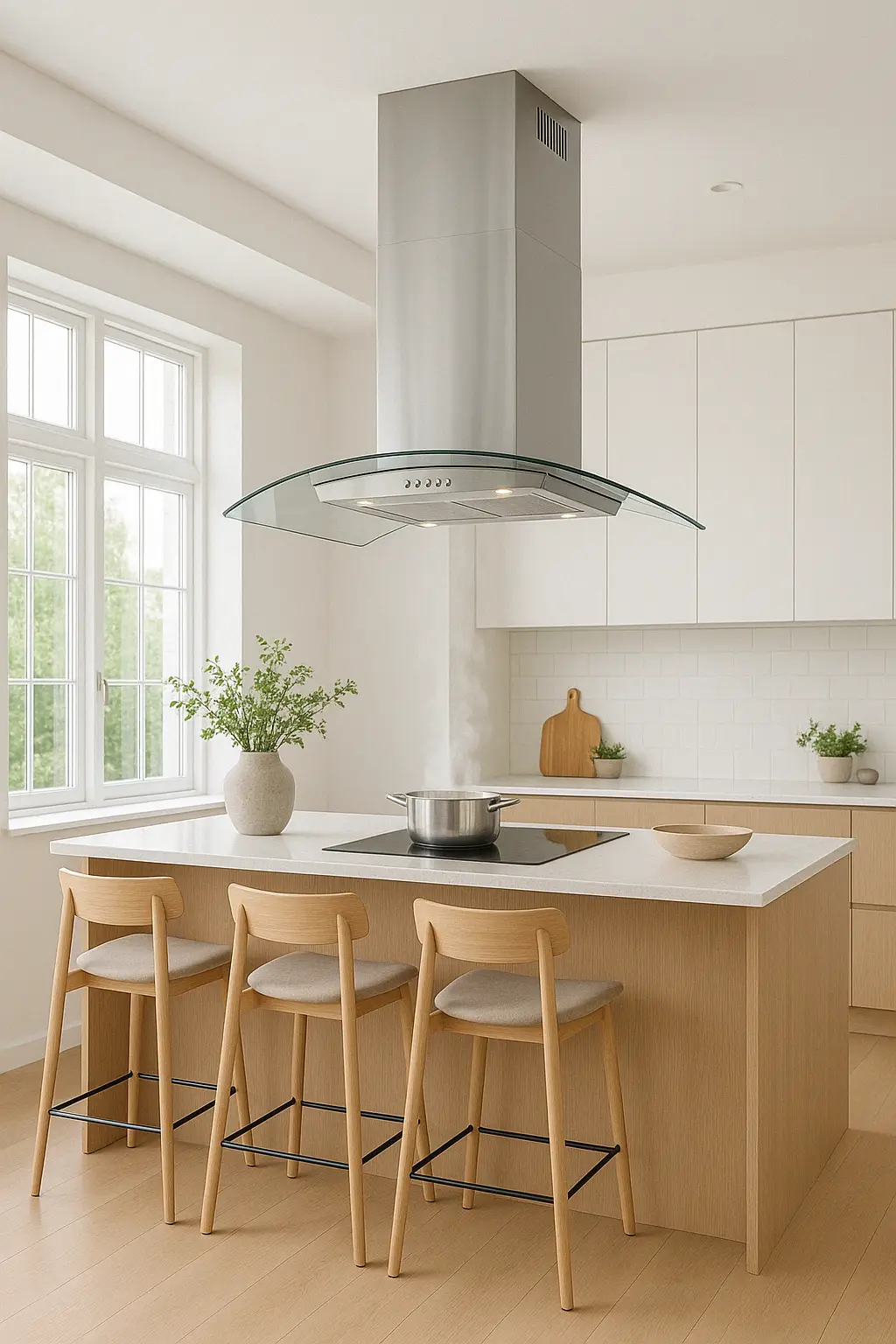Everything you need to know about
Cooker Hood Extraction Rates
What extraction rate do I need for my kitchen?
The size of the kitchen is the biggest factor when choosing a cooker hoods extraction rate. The extraction rate should match the volume of your kitchen to properly clear smoke, odours, and steam.

The first thing to consider whether the hood is ducted or recirculating. Ducted models are more efficient, while recirculating hoods may need a higher extraction rate to compensate.
Open-plan kitchens or island installations often require extra power, so it’s wise to choose a slightly more powerful hood than the bare minimum.
When choosing a cooker hood, start by calculating your kitchen’s volume (length × width × height). The extraction rate should be at least 10 times the volume to effectively remove steam, odours, and grease.
For example, a kitchen of 30 m³ would need a minimum extraction rate of 300 m³/h, though a bit higher is often better for performance.
- Measure the kitchen length (in metres)
- Measure the kitchen width (in metres)
- Measure the ceiling height (in metres)
-
Calculate the kitchen volume:
Volume = Length × Width × Height - Work out the recommended extraction rate: Extraction rate = Volume × 10 (or up to 12 for better performance)
- Choose a cooker hood with an extraction rate equal to or higher than this figure
- If using a recirculating hood (not vented to the outside), aim for a higher rate to compensate
- If the hood will be positioned above an island, consider an even higher rate due to open airflow
Cooker hood speed settings
Here’s why they matter:
- Light cooking (like boiling water or simmering) only needs a low speed, which saves energy and keeps noise down.
- More intense cooking (like frying, grilling, or using a wok) creates more steam and grease, so higher speeds help clear the air quickly.
- A boost or intensive setting can be useful for short bursts when you need rapid extraction, such as after burning food or during heavy cooking sessions.
Having multiple speeds gives you flexibility, better air control, and a more comfortable cooking environment without always running the fan at full power.
Other things to consider
Noise Level
Look for models under 65 dB for quieter operation, especially in open-plan spaces.
Hood Type & Design
Pick a style that suits your layout: wall-mounted, island, integrated, or ceiling
Ducting Efficiency
Short, wide, and straight ducting improves airflow and overall performance.
Controls
Touch controls, remotes, or smart features add convenience and better usability.
Filter Type
Wash metal grease filters frequently; carbon filters (for recirculating hoods) need regular replacement.
Lighting
Good built-in lighting improves visibility and enhances your cooking space.
